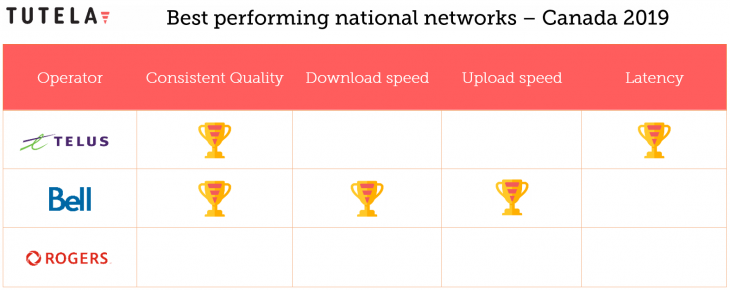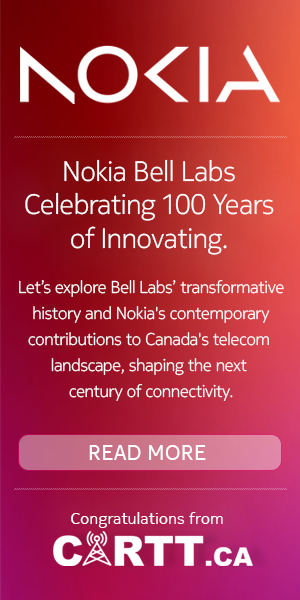
VICTORIA – Bell and Telus are tied for their ability to offer a consistent quality across their national networks, edging out Rogers by 10%, says a new report from Canadian independent mobile network data company Tutela.
The report, Canada: State of Mobile Networks, March 2019, used over 1.8 billion measurements taken between August 1, 2018 and January 31, 2019, including 13.4 million speed tests and 153 million latency tests collected from more than 1 million mobile devices. Tutela said that while fast top speeds are indicative of a strong network, it believes that reliable network quality is equally, if not more, important.
“Operators across the country have worked to upgrade 3G networks to LTE-Advanced technology, and now peak throughput speeds have increased to a point where they outstrip the maximum needed for most current use cases”, said Hunter Macdonald, Tutela's founder and CEO, in the report’s news release. “At this time, operators need to refocus on ensuring that these maximum potential speeds are also matched with a reliable, consistent mobile experience. After all, what use is occasionally hitting gigabit download speeds if half the time you’re struggling to load a Google search result?”
According to the report, across the whole country, Rogers' "quality score was nine percentage points lower than the other two national operators. Overall, in one out of four tests, Rogers customers' network connection did not meet Tutela's threshold for excellent consistent quality, which may translate to an inferior experience with demanding use-cases like HD video streaming and real-time group video calling." However, continues the report, when it comes to overall basic consistent quality for making a voice call, web browsing, or checking email, Rogers is almost on par with Bell or Telus.
Examining the results geographically, Telus and Bell tied for first place in excellent quality in most provinces, though Telus has an edge in Manitoba and Newfoundland and Labrador, while Bell has an advantage in PEI and Nova Scotia. Rogers’ only edge over the competition is in Saskatchewan.
The report ranked Bell tops for average download speed with 27.1 Mbps, compared to 23.3 Mbps for Telus, and 14.8 Mbps for Rogers, however, it underscored that Bell’s advantage in download speed doesn’t translate to gains in consistent quality.
“Rogers’ average download speed might be 50% of what customers on Bell would typically see, but 14.8 Mbps still far exceeds the excellent consistent quality threshold, and is fast enough that customers should rarely notice download speed being the bottleneck”, reads the report. “Instead, other network performance factors (such as latency) and the availability of LTE coverage is to blame for Rogers’ last-place finish in consistent quality.”
The report says that latency, the measure of how long it takes a small packet to travel from a customers’ device to the server owned by whichever service they’re using, proves to be more of a challenge for Canadian operators due to the country’s vast size.
“In our latency tests, Bell and Telus performed nearly identically, with Telus edging out Bell by less than one millisecond,” continues the report. “The step down to Rogers might seem small – the 10 ms difference between first and last place is less than the average human reaction time to a loud noise – but it puts Rogers close to 50 ms, the point where users will start to notice a lag, particularly in use cases like video calling.”
The report added that regional operators have a clear home-field advantage, noting that Videotron wins in Quebec when it comes to providing a consistently excellent experience to subscribers nearly 90% of the time, while Sasktel achieved an 83% excellent consistent quality, impressive given its focus on rural coverage.
As for the pre-paid flanker brands associated with the Big Three, the report found that the “premium” Mobile Virtual Network Operators (MVNOs) i.e. Virgin (Bell), Koodoo (Telus) and Fido (Rogers) offer almost exactly the same level of service as customers on the postpaid networks. However, the “cheaper” MVNOs (Bell’s Lucky, Telus’ Public and Rogers’ Chatr) offer “a limited network experience in return for their cheaper plans”.
Tutela says it uses crowdsourcing “to test mobile networks in a way that represents the day-to-day usage and experience of real-world mobile users, directly from the users’ handsets”, and that its software runs in the background of over 3,000 diverse third-party mobile apps, which have partnered with the company to study network quality.



